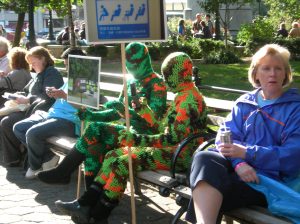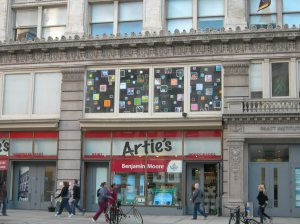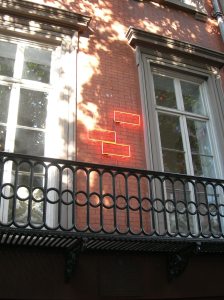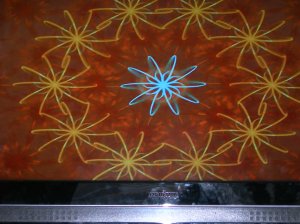America by Car – Lee Friedlander at the Whitney
October 30, 2010
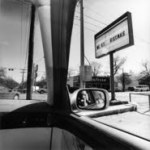 Road trips have always been a favorite way to explore this vast country of ours. What better way to experience the varied landscape, urban and rural space and inherent local flavor than by car.
Road trips have always been a favorite way to explore this vast country of ours. What better way to experience the varied landscape, urban and rural space and inherent local flavor than by car.
The Whitney’s latest installment, America by Car, takes us on a tour across country with renowned photographer Lee Friedlander. We pass through vibrant cities, one-horse towns, scenic backdrops, and encounter loads of welcoming citizens, all of which are visualized through the camera lens, as well as the 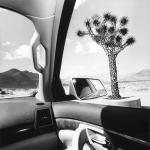 car window.
car window.
In each of the black and white square-framed pieces, mostly taken between 2004 and 2008, Friedlander gives us a glimpse of our fabled country, in addition to the interior of his rental car – rear view mirror, dashboard, gear shift, and seat belts. The entirety of the exhibit exudes a mystical quality, although somewhat tedious at times (192 images), and a vivid snapshot of life on the road.
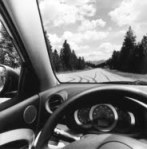

Jean-Michel Basquiat: The Radiant Child
August 6, 2010
 Anyone wishing to get a glimpse of the art world back on the early 1980s should check out the film
Anyone wishing to get a glimpse of the art world back on the early 1980s should check out the film
Jean-Michel Basquiat: The Radiant Child
Much is already known about the life and death of this prolific painter who would have turned 50 this year. Very little is understood of the personal side of Basquiat’s genius. The film successfully unveils the rags to riches tapestry from a very compelling inside perspective, including an interview from 1983 that was stashed away in a closet until now and intimate nuggets from the likes of Andy Warhol, Julian Schnabel, among others.
We also get to witness NYC back in the heady days of sex, drugs, music, clubs and art. How many of us remember how cool Soho once was and how gritty the area now called Nolita had been? The art scene was so truly available and accessible, unlike the high brow, elitist landscape it has evolved into today.
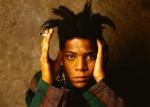



Greek and Roman Galleries at the Met – A magical step back in history
December 28, 2009
 As one first proceeds towards the Metropolitan’s Greek and Roman Galleries and gets a glimpse of the long hall of statues ahead, the response is complete awe. For housed in these next rooms are some of the best examples of marble and stone carvings anywhere in the world.
As one first proceeds towards the Metropolitan’s Greek and Roman Galleries and gets a glimpse of the long hall of statues ahead, the response is complete awe. For housed in these next rooms are some of the best examples of marble and stone carvings anywhere in the world.
Many are in various states of restoration and most are Roman reproductions of the Greek originals. However, they are all awe-inspiring. Plus, the natural light, towering ceilings and expansive rooms all aid in bringing a magnificent time in history back to life.


In the center of the first hall is a majestic warrior from the Roman Antonine period, AD 138-181, a copy of a Greek bronze. He holds a shield in his left arm and probably had a spear in his right, as his grandiose presence commands over the long hall and the many fabulous works surrounding him.

Bronze Warrior
There is the Apollo with the missing head, some fragments of the Great Eleusinian Relief, immense ceramic urns, as well as a few robed women from the second half of the Fourth century B.C. The exquisite detail, such as the many creases in the garments, suggests that these pieces are Greek originals and not Roman copies.
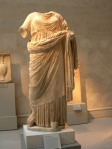
Greek Robed Woman
If you turn off to the room to your left you will encounter a marble statue of a Kouros (youth) from the Greek Attic period 590-580 BC. It is one of the earliest marble statues of a human figure carved in Attica and it is clearly derived from Egyptian art. This piece marked the grave of a young Athenian aristocrat.

Kouros
Now enter the grand light-drenched room – encompassed by a glass-installed atrium with a stately marble fountain in its center – and you will be overwhelmed by many masterful pieces, most of which are from the Roman Imperial period, the 1st to 2nd centuries A.D.

Witness the marble Hercules seated on a rock (only his torso remains), the statue of Aphrodite and that of a seated muse, each brilliant in it own right. Further along you will pass The Three Graces standing side by side – Aglaia (Beauty), Euphrosyne (Mirth) and Thalia (Abundance) – said to be the handmaidens to Aphrodite.

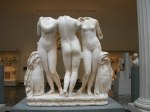
The Three Graces
Then there are the fabulous over life-sized Hercules’, one youthful, the other bearded, standing across the hall from each other. Both may have been excavated in the remains of public baths constructed under Nero in AD 62 near the Pantheon.

Young Hercules
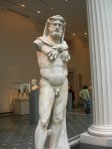
Bearded Hercules
The Crouching Aphrodite is a particularly special piece as it was designed to be viewed from all angles. The work is of the goddess crouching at her bath with Eros (no longer seen) behind her.

Crouching Aphrodite

Crouching Aphrodite
Towards the back room are the absolutely amazing Sarcophagi. The highlight is the intricately carved structure of Dionyses on a panther with his attendants. The work is Roman from AD 220-230.


Further along is a marble sarcophagus lid with a reclining couple from the Roman Severan period, AD 220. The piece represents the personification of earth and water, with the wife’s head left unfinished, suggesting that the husband likely predeceased her and that no one added her portrait after she died.


In the back room are housed some very singular works. Witness the portrait head of Emperor Constantine I, from the Roman Constantine period, AD 325-370. Constantine was the first emperor of Rome and this bust is an ideal example of what an emperor should look like – neat, clean-shaven, imperial.

Emperor Constantine l
The immense bronze statue of Emperor Trebonianus Gallus, AD 251-253, is one of the very few nearly complete statues of the Third Century preserved today and has gone through several campaigns of restoration.

Trebonianus Gallus
Meandering through these halls one can easily get lost in thought of times long ago. The many benches in the main hall offer the ability to spend hours here, gazing at the exquisite carvings, soaking in the chronicles and legends of history.
Our Featured Artist of the Week – Marilyn Weiss
December 1, 2009

Marilyn Weiss, an accomplished artist for more than 30 years, considers herself to be first and foremost a collagist. The constant changing nature of this special medium always offers something new and allows her to work with an infinite variation of colors, textures and shapes.
A material world
While there is no specific material that is her favorite, Marilyn finds herself drawn to those that elicit history. She uses “bits and pieces” from her life or the lives of family and friends. Old papers, thread, strings, and buttons will often turn up in her work, as will fabric or yarn from a baby sweater or, possibly, a vintage dress.
The material is not used literally, rather it is melded into a piece so that it loses its original identity and takes on another. But each collage piece chosen has to have meaning and be relevant to the specific work – it is not just “stuck on”.
And yet, in the end, for Marilyn, collage is strictly an emotional process. She does not try to figure out why something works – she just feels it when it does.
Take “Cool Space” for example. The work is a hand-worked monotype, one of a series of three – this being the most colorful. It is a whimsical, bright and happy piece inspired by children and one can easilyvisualize the play between the real and the artificial.

Cool Space
“Just Me,” is a sweet and sentimental mixed media, collage. We witness a female figure sitting by herself, seemingly content and happy.

Just Me
A feminine touch
A self-proclaimed people person, Marilyn’s art usually includes human figures, and most often they are women. Fascinated by relationships and the way forms and figures interact, there is a dominant feminine theme and form in much of her work.
“You can say that I’m a feminist,” she explains. “Not in a beat- yourself-over-the-head kind of way, but in the fact that I always paint women. I guess I’m saying that we’re here and we’re important. It’s subtle, but it’s there.”
Some great examples of this genre of her work are “Studio View, Grays” and “Sister Act,” both intricate collages with a distinct feminine theme.
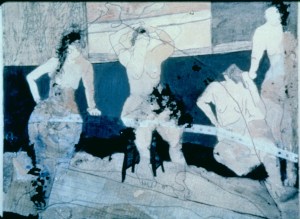
Studio Views, Grays

Sister Act
Weiss is quite clear that she loves what she does – creating art gives her great pleasure. She believes that art is meant to be seen and enjoyed, and hopes that her work stirs sensibilities, provokes emotions and most importantly, brings joy to those who experience it.
After meeting her and studying the pieces offered in our upcoming December auction, we can say that her hopes have been achieved – we have thoroughly enjoyed getting to know both Marilyn Weiss and her wonderful body of work.
To view the ArtistsinAuction website click here.
To view more of Marilyn Weiss’ work, click here.

IN and OUT

Sunday Morning
Our Featured Artist of the Week – Zeke Berman
November 25, 2009

Goblet Portraits 1977
The work of Zeke Berman demonstrates a truly unique eye in the world of photography. We are truly grateful to have such a talented artist on board, partaking in our upcoming auction.
Berman has honed his craft over the last 35 years, producing singular, studio-based photographs that reflect his long-standing interest in visual cognition and optics.
His work has evolved much over the years but always explores an intersection between sculpture, photography and drawing.
From the outset Berman received strong critical acclaim. His work has been collected, published and exhibited in galleries and museums such as MoMA, The Metropolitan, The Whitney, and Art Institute of Chicago. He has been featured in the first New Photography Exhibition at MoMA and has received multiple awards, including the Guggenheim, NEA and NYFA Arts Fellowships.
In the beginning
As a kid, Berman loved sculpture. He attended the High School of Music and Art and studied sculpture at the Philadelphia College of Art. He only backed into photography after graduating. To date he approaches photography as a studio based art and his sculptural training clearly plays an important part in his working process.
During his years in art school, conceptual art and minimalism were a fresh aspect of contemporary art. At that time, Berman began a developing fascination in perception theory – a lifelong interest that involves questions of cognition, optical illusion and the evolution of the senses. The idea that an illusion can change in appearance, right before our eyes, is equally fascinating and inspiring to him.
His study found its way into his working process when he began to experiment with a camera in the studio. Berman’s epiphany came when he discovered a deep mystery and possibility in the transformation of a three-dimensional construction into a two-dimensional photograph.
A cumulative process
The formal range of Berman’s work and his sculptural use of materials is varied, original and idiosyncratic. All his pieces are intricately designed and constructed in his studio.
Berman uses a 4X5 studio view camera to create all his photography. The procedure is an old one that delivers extremely sharp, and clear prints, as well as images that are very realistic in the description of the materials used. The end result is often a photograph designed from a construction but with the appearance of a drawing.
His process is cumulative in nature – he makes photographic sketches constantly as he constructs and reconstructs, creating many, images as the work evolves. Intuition and spontaneity ensue throughout the process. We asked him how he knows when he has finally completed a piece. His answer is that it simply feels complete.
Optical illusion
In the late 1970’s Berman had a direct interest in creating different kinds of illusion. His work from this period clearly demonstrates optical illusion and the transformation of three-dimension into two-dimension.
“Cup with Objects” from 1979 is a great example of 3D/2D play. All the objects fill up the frame up to the edge, however, one slight shift of the camera and the pieces wouldn’t work together.

Cup with Objects
“Web,” a piece from the late 80’s contains an actual spider web. It is a very linear, abstract work, and one that clearly depicts the flow from drawing to sculpture to photography. In fact, much of his work from this time period was very linear in nature.

Web
Later pieces demonstrate the evolution and progression in his photography.
Take for example “Shoe and Tire,” a 1993 commission piece for Progressive Corporation, an auto insurance company. The company CEO is an avid art collector and commissioned Berman to create a suite of still life’s around which the company’s Annual Report was designed. He won several design awards for this work.

Shoe and Tire
“Heart,” created in 1995 was commissioned by graphic designer Mark Schwartz for his daughter who was born on Valentine’s day.

Heart
Although Berman rarely photographs people, “Standing Stack” from 1997 was made at a time when he wished to bring more human presence into his work.

Standing Stack
Berman lives and works in NYC. He now works mostly in color, a new turn in his evolving body of work.
To view the ArtistsinAuction website click here.
To view more of Zeke Berman’s work, click here.

Plant Slice 1999

Fat Lamp and Cherry Blossoms 2008
Highlights of ArtistsinAuction’s Reception
November 24, 2009

We were thrilled to see such a great turnout of art aficionados at our preauction reception last Thursday in lower Manhattan.
More than 100 guests attended the event to see the works of several of our NewYork based artists, including Tom Smith, Mike Lindwasser, Dulcie Dee, Sean Parrott, EGSilberman, Robin Antar, Alex White-Mazzarella, Zeke Berman, Marilyn Weiss and Joni Diskint. A great time was had by all as many of our talented artists were also in attendance to answer questions and share in conversation and cocktails.





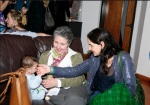

All of their wonderful and varied pieces are available for sale, as are those by our many other talented artists across the country – and all at extremely affordable prices! We are currently featuring a wide array of media – photography, painting, drawing, sculpture, mixed media, so there is truly something for everyone irrespective of taste.
Our auction date is soon approaching and it’s still not too late to bid on work that you love. Or perhaps purchase a piece for someone else – art makes for a fabulous gift idea!
Please visit www.artistsinauction.com to view our complete roster of artists and browse through our catalog to see the entire collection of artwork we are offering for sale.
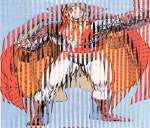
Untitled (magician) by Tom Smith

Floral #2 by EGSilberman
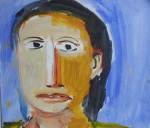
Picnic by R. Gene Barbera
ART BUZZ:
Art Addict:
Displaying Art…
The Art Newspaper:
Controversy over New Museum’s plans to show trustee’s collection…
Art is truly for everyone – and everyone can appreciate art.
Our Featured Artist of the Week – Joni Diskint
November 20, 2009
Joni Diskint is fortunate to be a full-time artist – not a luxury afforded by many. She has set up her home in Chatham, New Jersey as a gallery – Joni Diskint Fine Art – specifically designed to showcase her work.
Her history probably dictated that she would set out on an artistic path. As a child, she was extremely creative, writing stories and making illustrations at a very young age. In fact, she nearly published a book when she was in the fifth grade.
The early years
But she only fully entertained the idea of being an artist when she was in college. She flourished in color and painting classes, received great feedback from professors, and decided to spend a year in London pursing her craft.
Things started to happen for her rather quickly. While living and painting in Colorado she began to show her work at local shows. At 25, she had her first show in Soho, NY, which marked the beginning of a yearly occurrence – she would show at a different gallery in Soho every year. At the time, she lived in the Berkshires, where she owned a gallery and would exhibit her work as well as that of other emerging artists.
At 30, she moved to the east side of NYC. “There was too much going on in the city not to be here”, she says. Soon her work started selling in earnest, especially once she started offering prints of her pieces.
Seeing the light
The landscape is her inspiration – the colors and the light, as well as its never ending, constantly changing nature. In most of her pieces the sky plays an important role because it is forever moving and always conveying a unique type of light.
Take “Lonesome Valley,” a very evocative and challenging piece that conveys a dramatic, dark sky contrasting against the white snow. The piece is very deep and intense and is made from a very dark color palette. The ominous sky takes the viewer into a depth, to a different place.
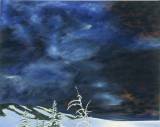
The “Oil Lamps” are equally evocative in their portrayal of light. She bought the lamps in India and uses them for meditation, mostly at night when they cast a very solemn glow. Her idea was to capture the dark, that is to paint the light within the dark, and her aim was to go as dark as possible. She had studied Vermeer and other masters who so artfully conveyed light, and so she felt the need to do so as well.

“Reflected Light” is another play on light, this time using the reflection of the sun against the trees at sunset. These trees are actually in her backyard and she worked endlessly to evoke the light to come through to the canvas.
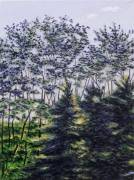
Joni sells through her home as well as through a variety of charity shows. She also has a separate studio attached to the house where she teaches painting classes. We invite you to view the work of our featured artist and to “see the light” in her varied works.
To view the ArtistsinAuction website click here.
To view more of Joni Diskint’s work, click here.
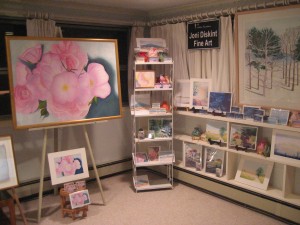
Georgia O’Keefe: A Life of Color and Abstraction
November 17, 2009
If you love color and abstraction, you won’t want to miss the Georgia O’Keefe exhibit currently on display at the Whitney Museum in NY. By now you’ve read multiple reviews, but it can honestly be said that this is one show you have to see in order to “experience”.
While it is true that Georgia O’Keefe’s flowers and landscapes made her one of the most celebrated figures of twentieth-century art, the radical abstractions she created throughout her career are much less well known. Yet they are equally spectacular. In fact, it is her abstract work that ultimately led to her creation of landscapes and florals, and not the other way around.
For O’Keefe, abstraction offered a medium in which she could portray the “unknown” – the many intense thoughts and ideas she could not express in words. Her work conveys emotional response to people and places, as well as the rhythms of nature and the experience of being enveloped by its mystery and beauty.
The exhibit also chronicles the life saga of an extremely prolific artist, allowing us to feel her emotions as she went through different stages of elation and agony. At times her pieces explode with color, at other more distressful times, color becomes somewhat subdued.
Charcoals
In 1916, O’Keefe burst onto the New York scene with her charcoal abstracts – some of the most radical works ever produced in the US in the twentieth century. Renowned photographer Alfred Steiglitz, who would shortly become her personal and professional partner, gave her a show in 1917, exhibiting her work for the first time at his “291” gallery.
Witness “Early Abstraction” from 1915 – a linear work that takes on the form of a piece of sculpture.
Vibrant Oils
She first introduced oils at the Anderson Galleries in 1923, marking the public’s first view of her work since 1917 at “291.” It was a jubilant time for O’Keefe, both artistically and personally, and the vibrant colors she uses – fiery reds, lush greens, erotic greens and yellow – convey her exhilaration. Favorites of ours include “Pink and Green,” 1922, “Corn Dark,” 1924, “Red Canna,” 1925-1928, and “White Sweet Peas,” 1926 (you’ll have to see these for yourself in person).
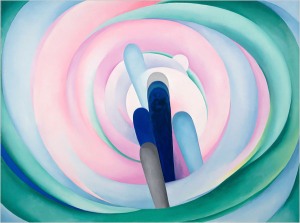
"Grey, Blue & Black-Pink Circle," 1929
There is one particularly darker piece from this time period, a work that portrays her experience of undergoing anesthesia before an operation to remove a benign breast cyst – “Black Abstraction,” 1927.
O’Keefe married Steiglitz in 1924 and they spent winters in NYC and summers at his home on Lake George. Many of the colorful lake series were produced during the peaceful times spent there.
Darker times
O’Keefe first started to travel to New Mexico in 1929. Steiglitz was having an affair with a younger woman and she felt the need to escape. In 1932 she suffered a nervous breakdown and stopped painting altogether until 1934. For the next ten years abstraction figured very little into her work until the Black Place Series, which were based on an area in New Mexico 150 miles west of her home at Ghost Ranch.
Paving the way
After Steiglitz’s death in 1946, O’Keefe moved permanently to New Mexico, at which time she began to introduce flat geometric planes of color, a factor that would play a central role in the art of the 1960’s. A great example is “Black Door with Red” from 1954.
A personal favorite is the opening work to the exhibit – “Above the Clouds” – an absolute masterpiece, which was created in the early 1960’s.
Although the exhibit stops around this time period, O’Keefe would go on to expand and evolve through her painting. She died in 1986 – at the ripe old age of 98 – having left an indelible mark on the world of abstract art.
To view the ArtistsinAuction website click here.
Our Featured Artist of the Week – Tom Smith
November 14, 2009
The collages of Tom Smith are optically stimulating and complex – viewers are often hypnotized by his mesmerizing work. So, we were eager to learn more about our featured artist’s creativity and the ways in which he developed his unique craft.
It turns out that Smith has art in his blood – his mother is an accomplished decorative artist and his father has a deep appreciation of the arts. So it was no wonder that he followed in the same footsteps. In fact, never once did he entertain the notion of doing anything in life that was non-creative.
Smith studied art in Baltimore, close to his hometown in Maryland, and majored in illustration due to his strong interest in narrative work and storytelling. He went on to graduate school to further pursue his metier. Half-way through his studies a light bulb went off in his head as he realized he had something definitive he wanted and needed to share with others.
The turning point
Fine artist and printmaker, Carroll Dunham, whom Smith assisted when he first moved to New York, was the most influential person in his early career. Carroll stripped down all of Tom’s work and forced him to focus strictly on drawing (he spent an entire year devoted to this particular craft).
As a result, Smith became more introspective and was able to move into the subconscious, channeling human interest into his pieces versus the other way around. After that significant one year period, he finally understood his creative sensibilities.
To date, all of Smith’s work is drawing based, whether he is painting, sculpting, photographing or making collages. He expects that his drawing will evolve to other forms of new media in the not too distant future.
Superhero meditation
Smith’s collages emerged directly from his massive collection of superheroes – comic books, figurines, etc. The idea was to meld character images and witness the optical illusions he was able to produce. In fact, he discovered that a character could be completely transformed through the introduction of another image.
His process is equally transformative. The meticulous skill involved, although highly technical, is extremely repetitive and, therefore, exceedingly meditative. At first he is in control, but soon control flies out the window as he begins to manipulate images. A discovery element is always present as he never is quite sure what will emerge.
Color theory and the work of Josef Albers also play a large part in Smith’s collage work. All the pieces are based on the intermeshing of colors and the appearance of images as a consequence of color selection and interaction.
Take Untitled (red, yellow, blue), one of the first pieces he designed. Smith decided to create a collage based on the primary colors of red, yellow and blue – the three opposite sides of the color spectrum. Poring through the hundreds of images in his possession, he had to uncover three images that not only bore the requisite colors but were also standing upright. Combining them, he was able to create a figurative piece with the characters in the middle, successfully intersecting Minimalist art with Contemporary art.
Untitled (magenta) is equally illusionary. In this work, we witness a woman with minimal clothing represented in a very special way as her image is placed among a field of pinks and magentas.
In Untitled (bird and gun) we see two women, one holding a bird, the other, a gun, both with identical background colors. The resulting image is the appearance of two individuals in one space, despite the fragmentation. The piece has been pushed into a very simplistic direction, yet can be very disorienting to the viewer.
Smith’s collage work has been very influential to his other work. For example, collage, which is two-dimensional, naturally transcended into sculpture, which is three-dimensional. He tells us that he is getting ready to produce an entirely new body of work, utilizing figurative aspects, yet in the realm of the landscape.
Tom currently lives and works in New York City and has the unique opportunity to be working full-time in a studio assisting a number of established artists. He admits his good fortune and loves that he is always learning new techniques and staying “au courant,” not to mention extremely motivated. Plus, he gets to feed on the creative energy when he uses the studio for his own work at night and on weekends.
We invite you to peer into the hypnotic and magnetic work of a very talented artist.
To view the ArtistsinAuction website click here.
To view more of Tom Smith’s work, click here.
Our Featured Artist of the Week – Dulcie Dee
November 5, 2009
Dulcie Dee, an American born Chinese artist, is also a native New Yorker who grew up on the Upper West Side. Her grandfather, Dee C. Chuan, was the founder of the China bank in Manila, Philippines. As a result of this familial tie, Dulcie was sent over by her father in the early 1970s to meet her Asian relatives. She spent much time during her growing years in the Philippines and received her Bachelor of Arts degree from the University in Manila.
After college Dee became a freelance artist, working for the big ad agencies in NYC as a hands-on graphic designer for the better part of 15 years. She always painted and exhibited in shows along the way, the first in 1992, which was a one-woman show.
The Geisha Exposed
Her experiences in Manila were a real eye opener and initiated the start of her unique painterly style of Asian Art. She pored over the books in the local libraries and found loads of inspiration.
In the 1980s Dee started copying the Japanese shunga wood block print masters who had so fascinated her, such as Utamaro and Yoshitoshi. Mainly, she would copy Samurais and Geishas to paper. First she used color pencil, as well as pen and ink to simulate the wood block, but over the years she finessed the work to suit her distinct style. Interestingly enough, many of her Geisha paintings are self-portraits.
After four years in San Francisco, where she received her Masters, she came back to NY and started on a new Madame Butterfly series, a total of 12 pieces where she decidedly opened up the kimono and exposed the Geisha. Nicknamed the foreplay series, these works evoke a vibrancy based on color and semi-eroticism.
Soon after, in 2007, she participated in the Flashing Flesh group show at the Monkdogz gallery in Chelsea, marking the first time a Chelsea gallery exhibited her work.
Hard Times
“Peking Princess” came next. This large, oil on canvas is a self-portrait that depicts the Chinese girl painter caught amid the oncoming recession in NY. The blue/green hair symbolizes suffocation and struggle – life’s hardship where she is spinning her wheels and not really getting anywhere in terms of job prospects. The piece was shown earlier this year at the National Arts Gallery Roundtable, a show that included invited guest artists.
Dee currently lives and works in her studio apartment in the Financial district. She constantly paints but is eager to find work, and at this point, a roommate to help share the costs of living in NYC. We are excited to have her as one of our featured artists and wish her much success.
To view the ArtistsinAuction website click here.
To view more of Dulcie Dee’s work, click here.
ArtistsinAuction Preauction Reception
November 3, 2009
PREAUCTION RECEPTION
BUY ART!!!!
ArtistsinAuction, the premiere online auction company, wants to invite you to our Preauction Launch party!
Come and meet several local, talented artists, view their work and share in conversation and cocktails.
Thursday, November 19
studioimc
95 Morton Street
(between Greenwich and Washington Streets)
7th Floor
New York, NY 10014
7pm-9pm
To RSVP to this event, please contact info@artistsinauction.com.
If you know someone who may be interested in attending, you may pass along this invitation.
For more information on our business, featured artists and online auctions visit www.artistsinauction.com
ArtistsinAuction online catalog is LIVE!
November 2, 2009
ArtistsinAuction is proud to announce that our December 5th online auction catalog is now Live!!
Browse through a wide array of media – photography, painting, drawing, sculpture, mixed media – and place bids on pieces of interest. It’s a fantastic way to start or expand a collection of great art.
You can view our catalog directly or go to our website and connect through the “Bid in Auction” button at the top of every page. Remember, you will need to register in order to become an active bidder. Once you have done so, you may place preauction bids at any time. On December 5th, the live online auction will take place, at which time all bids will become final.
We encourage you to take advantage of the many affordable pieces of fabulous artwork we have on offer by our select group of talented artists from across the US.
To view the ArtistsinAuction website click here.
Our Featured Artist of the Week – EGSilberman
October 30, 2009
Growing up Evan Graham Silberman (EGSilberman) never believed he could really become an artist, that is, as a true profession. He is still not sure it is possible, yet it is his dream.
In college he focused on advertising where he did loads of “art” work. And at one stage, when he began writing novels, he found painting to be a terrific release.
At first he worked on glass, building layers to the top surface and honing what would become his signature style – textured dimensionality. As glass became precarious (it breaks very easily), he discovered acetate, a great medium in which the artist can slowly form and build a piece, and with the similar ability that allows light to reflect through the surface.
The joy of light
All of EGSilberman’s work has a certain sparkle and joy based on light and texture. He uses acrylics to build dimensionality and acetate to capture light. At distinct times of the day his pieces often take on a different perspective, allowing the viewer to experience the light.
His work clearly expresses form over the literal. Take “Woman Form” for example. The piece starts with an actual hard plastic shape that a friend discovered. He applied his special white pigment paint and added adornments to create a lovely piece of sculpture.
In “Red Aquatic,” and most of his recent work, he creates a depth in which each part of the painting conveys a particular shadow. The piece is multi-dimensional, texturally-minded, and essentially built to play with light.
“Blue Woman” and “Chair Woman” are earlier works that focus more on the classic image than on dimensionality, while “Grapes,” a classic still life piece, is one of the few flat works in his repertoire.
A working apartment
Evan’s studio is a working apartment, as opposed to the other way around. Close to 500 pieces from more than 10 years of working are meticulously placed in every possible corner, nook and cranny.
He doesn’t really display his pieces much, in fact he hardly ever formally showcases his work as self promotion is not in his nature. Evan continues to write and work as a freelance advertising specialist, but is hopeful that his art will be more recognized in the future. We are very optimistic.
To view the ArtistsinAuction website click here.
To view more of EGSilberman’s work, click here.
CMA’s 5th Annual Art Auction is a Success
October 27, 2009
If you ever wondered whether an art auction was a good way to sell art, you would have clearly found your answer had you attended the Children’s Museum of the Arts 5th Annual Art Auction last Thursday.
With more than 40 pieces up for sale, both through live and silent auction, the event was a stellar opportunity for collectors to purchase a wide array of fabulous Contemporary Art by both emerging and established artists.
Works showcased included a Farah Fawcett Polaroid by Andy Warhol, a William Wegman dog portrait, and a Dusty Boynton mixed media piece, among many others. Also for sale was a favorite of ours by Antoine Verglas.
Plus, the event was a blast, drawing in hundreds of socialites to the hosting gallery of Phillip’s de Pury and Company in New York City’s Meatpacking district.
And most importantly, the auction brought in a tidy sum, all of which will go towards expanding CMA’s outreach programs for underprivileged children.
To view the ArtistsinAuction website click here.
Mike Lindwasser Exhibits in Group Show
October 19, 2009
Saturday night was the opening reception for Dreamer’s Rendezvous, a group show at the A-forest Gallery in NYC’s midtown area. We were proud to view the most recent work of our very own featured photographer, Mike Lindwasser.
Outside of the traditional Chelsea gallery neighborhood, the empty, dark street was a contrast to the bright, inviting feeling of the small gallery. The show highlighted wonderful works in photography, painting, pen and mixed media by six different artists.
It was intriguing to see what Mike had been working on since we brought him on board at ArtistsinAuction. Although he’s a local guy, (born and raised in NY, living in Jersey), Mike has been traveling a great deal. His current photography is a reflection of his latest journeys to Japan (where he participated in another group show) and Mexico.
Mike prefers to shoot many of his pieces at night, without the aid (or as he might say, distraction) of lighting. He works with long exposures, sometimes up to 30 seconds at a time, which create surreal-like images with a ghostly lighting effect. One of our favorites at the show was of a tree Mike had photographed in Japan. The consequence of the extended exposure created a “whitening” that gave the appearance of a photo taken at midday.
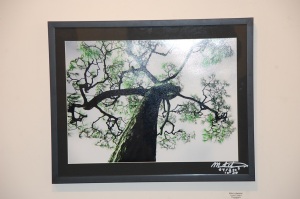
Mike is also a transformation artist, manipulating everyday objects into surreal images by shooting from below. Many of the pieces in our current auction, from the Building and Truck series, are small slivers of places or things encountered everyday. But, by pointing upward, Mike creates an entirely new perspective, forcing the viewer to take a second look.
Lately, Mike’s preferred work is his Truck series, a personal favorite of ours as well. Most of the images were shot in yards around his New Jersey home. Once he had mastered entering the areas at night without getting caught he discovered fabulous details and vibrant colors that called out to him.
Previously displayed at a show at the Brooklyn Collective, our December 5th Auction will mark the first time these exciting pieces have been offered for sale. We know you’ll love them as much as we do.
To view the ArtistsinAuction website click here.
To view more of Mike Lindwasser’s work, click here.
Children’s Museum of the Arts 5th Annual Art Auction
October 16, 2009
We are happy to announce that one of our affiliations, Children’s Museum of the Arts (CMA), will be hosting it’s 5th annual art auction on Thursday, October 22.
Now is your chance to witness and participate first hand in a live auction that features a fabulous array of art, including works by more than 40 artists, such as Andy Warhol, Peter Max, Yoko Ono, as well as John Bisbee, Carole Feuerman, among many others.
The auction is curated by Helene Miller and run by Phillips de Pury & Company. All proceeds will benefit CMA’s outreach programs that are geared towards underserved children and “celebrating the artist in every child”.
For more information and to purchase tickets please visit http://cmany.org/art-auction/artwork.html
To view the ArtistsinAuction website click here.
Our Featured Artist of the Week – Roshan Houshmand
October 16, 2009
If travel is the key to art, then artist Roshan Houshmand has successfully unlocked the door to creativity.
Born in the Philippines, where she lived for eight years, Houshmand then moved to Iran, her native land. While she currently lives in upstate New York, she has resided in no less than half a dozen places all over the world, including New York City, New Mexico and Arizona. But, Barcelona, Spain, where she lived for ten years, was the most important place in her life as an artist.
The early years
When Housmand was a child her dad used to manage a paint factory. She fondly remembers her love of playing with the many samples at a very early age. Once she attended art classes, she began to dabble in many facets of the arts – painting, sculpture, lithography – experiencing it all, but she finally focused on painting.
In college her work was mainly abstract in nature, but her travels lead to new inspiration.
On Travel and Particle Theory
Houshmand believes that travel is essential to her painting because the experiences allow her to absorb different colors and visions and to move out of her comfort zone. She also feels that working under unfamiliar circumstances results in the discovery of different techniques. Currently, she teaches at SUNY Delhi as well as private painting students, many of whom join her for painting workshops each January at a chosen venue in the world.
Her flower series are specific examples of the influence of her travels and they emerged from time spent in the deserts of Arizona. These pieces just burst with color and Houshmand admits that some of the magic is due to the fact that these life forms were so out of context to the surroundings.
Houshmand’s most recent paintings are influenced by physics and, specifically, by a lecture that she attended in the summer of 2005 at Columbia University in New York. She soon began creating black and white pieces based on the following of particle trails, and later shifted the technique to color. She explains that this particular technique is all about painting in the moment.
One example is “Zed,” inspired by the photography of particle trails from bubble chambers. The spirals are trails that signify a certain amount of energy transmission and the title, oddly enough, is based on a wacky Dr. Seuss character.
“Celestial Chamber,” while based on particle trails, includes manipulated lines and conveys a sense of telescopic imagery. The horizontal and vertical lines, as well as the spirals, all remind her of map making.
The Painting is in the Process
“Constellation” and the other dot paintings were done in Nicaragua and are meditative compositions based on schools of fish. While creating this piece and others like it, she found a very soothing feeling in the process.
Houshmand paints everyday and she says the process itself is what gets her inspired. Her work continues to evolve over time and these days she is using much more color. All her pieces are extremely organic and one need not understand physics to gain a spiritual sense from her work.
She sells quite a bit of work off of her website as well as on other online venues, like ArtistsinAuction, and through local galleries. We are thrilled that she has joined us in our venture.
To view the ArtistsinAuction website click here.
To view more of Roshan Houshmand’s work, click here.
Art in Odd Places – Aka The Art of Frustration
October 13, 2009
Currently, an ongoing exhibit throughout the month of October, this quirky mishmash of things scattered east to west along 14th street, is a lesson in futility.
You can actually pick up maps at various locations that specify the many installation locations, but in my recent outing at least 8 out of 10 indicated spots I visited, mainly street corners, were completely barren. Even the artwork supposedly housed in specific storefronts was next to impossible to find.
This is not to say all was lost. If you’ve ever wandered along 14th street in Manhattan, you know that you’ll not be remiss for lack of activity. Union Square in and of itself is one of the most lively destinations in NYC, especially on a warm Fall afternoon.
And art is, in fact, in many odd places in the Big Apple. I was searching for a piece called “Distressed” on the southeast corner of the park. To no avail. However, I did come across some familiar figures from my recent DUMBO outing. I think these guys are everywhere, trying to make a point no doubt, although I’m not quite sure what it is.
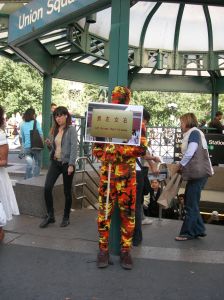
Next stop, moving westward, was Good Stuff Diner. Nada. The owner didn’t even know to what I was referring. A tad more luck at Artie’s Hardware. At least they knew about the artwork in question. Unfortunately, neither the artist not the artwork ever appeared.
Just next door, was an installation on the second floor windows of Pratt Institute. Art, I guess. In an odd place, hmmmmm. Onward.
The Andrew Norwood House had a small neon light piece called “Brick” on its brick façade. The manager kindly turned the lights on so I could see what all the fuss was about. Further along, at Dubspot, a great little coffee shop, the attendant knew exactly what I wanted. I had to wait while he served an espresso, but then he used the remote to turn the TV on. “Lost Sheep” was the title of this psychedelic panorama. At this point I had pretty much “lost” my patience.
Finally, at Tenth Avenue Car Wash, I thought I hit pay dirt. Just my bad fortune that the piece was only viewable during the night hours.
So, during the month, if you happen to be strolling along 14th street, keep your eyes open. There are, in fact, some pieces of art in odd places. You just have to be very, very lucky to find them.
To view the ArtistsinAuction website click here.
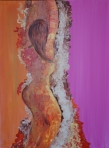
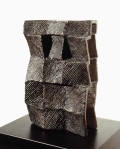
![Blue[1].A Blue[1].A](https://artistsinauction.files.wordpress.com/2009/10/blue1-a1.jpg?w=150&h=74)









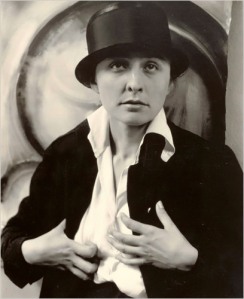

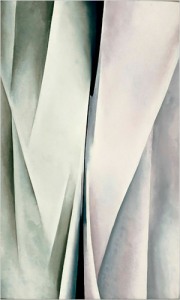

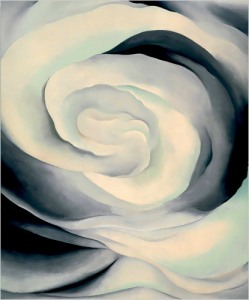
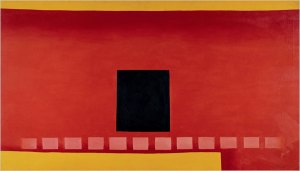
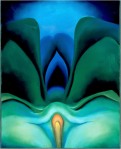


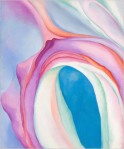
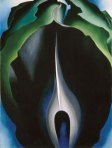
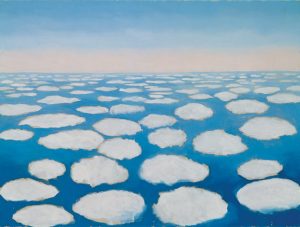
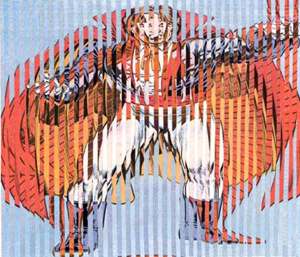
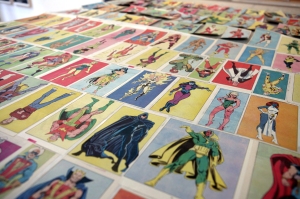



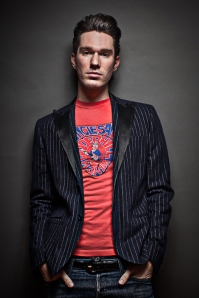

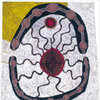

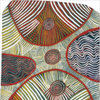
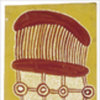
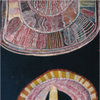


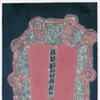


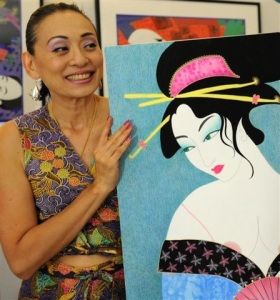
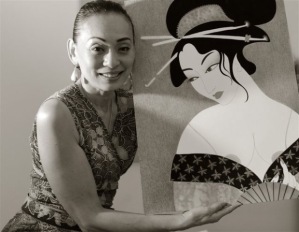
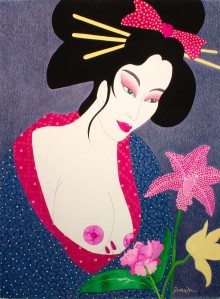



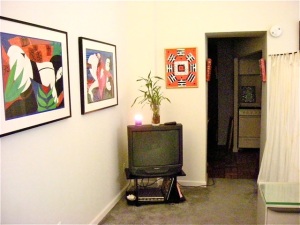


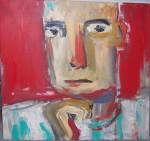
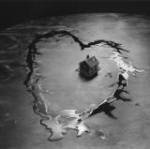
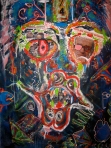
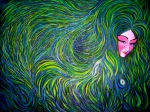
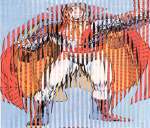
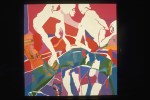
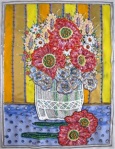


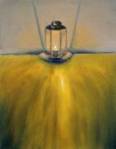
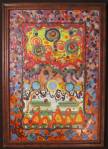


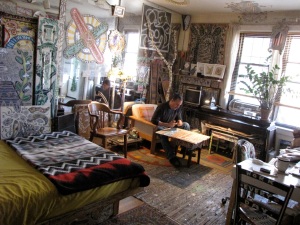
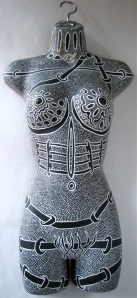
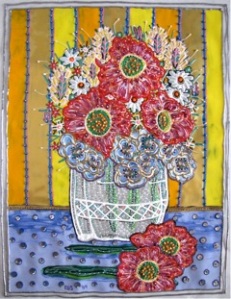



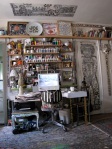
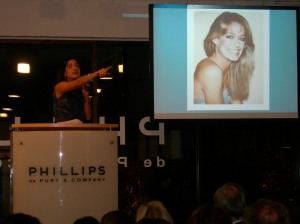
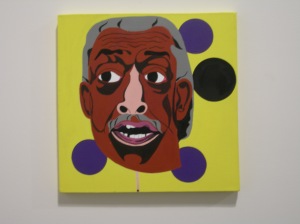
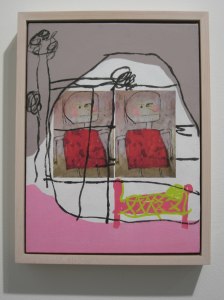

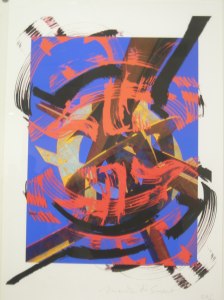
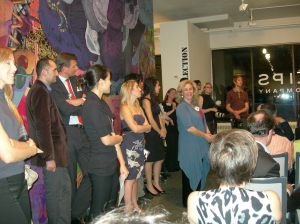
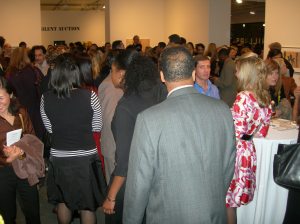
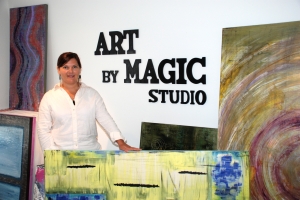
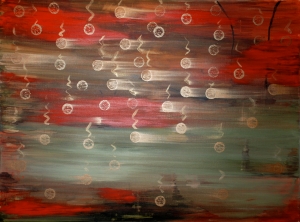

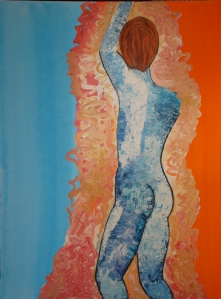
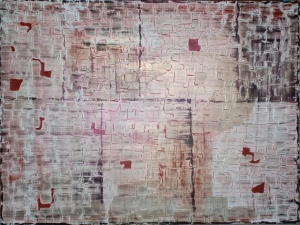

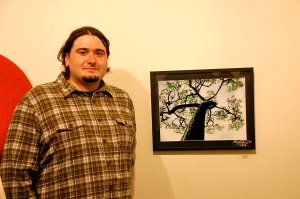
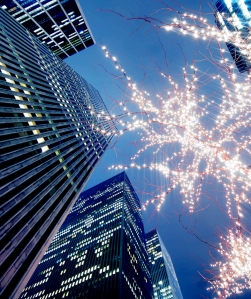
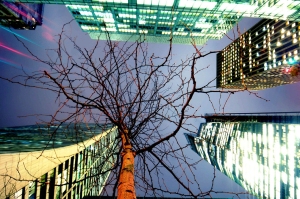



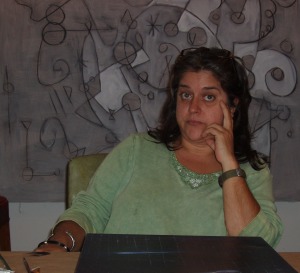
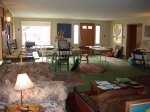
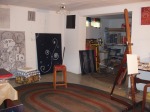
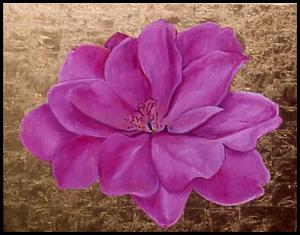
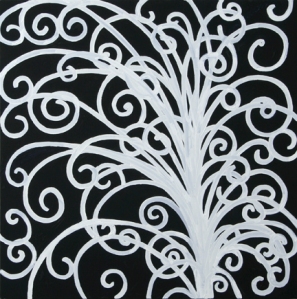
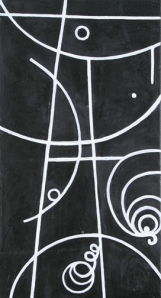
![Constellation[1].A Constellation](https://artistsinauction.files.wordpress.com/2009/10/constellation1-a.jpg?w=300&h=221)
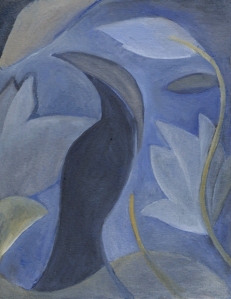
![Blue[1].A Blue](https://artistsinauction.files.wordpress.com/2009/10/blue1-a.jpg?w=300&h=148)
